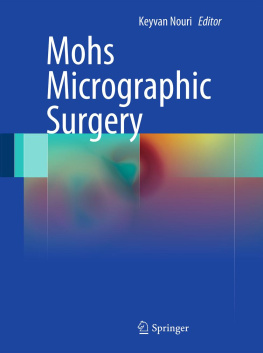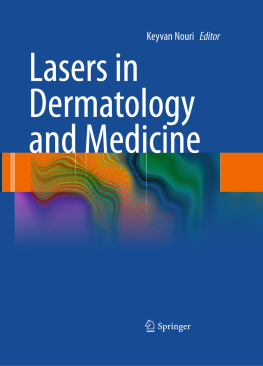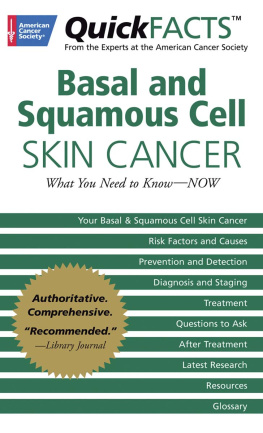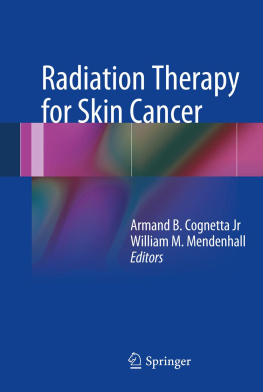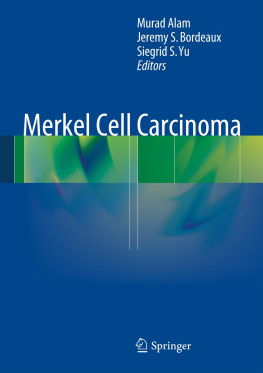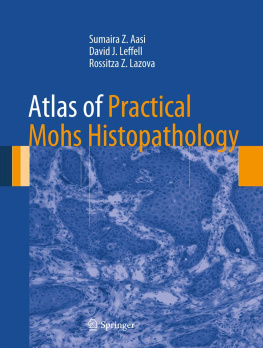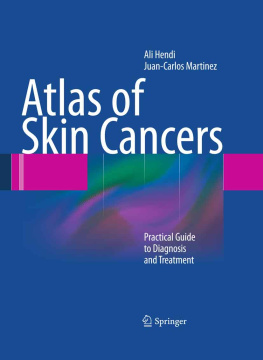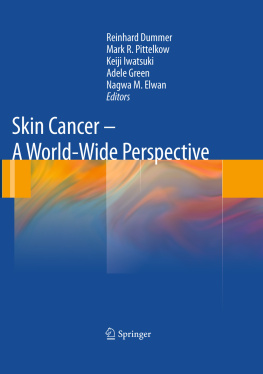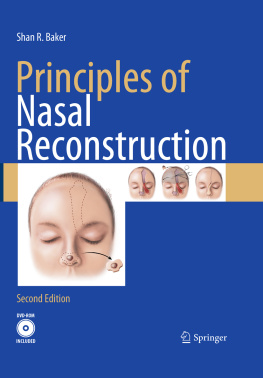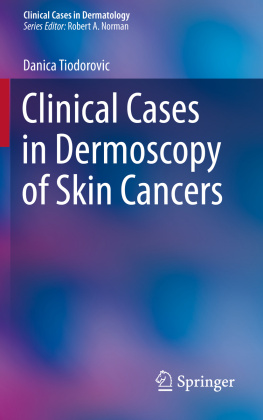1.2 Introduction
The founding father of Mohs micrographic surgery, Frederic E. Mohs, was born in Wisconsin in 1910. While he was a young child, his father died, and his family moved to Madison, Wisconsin. Mohs was only a medical student when he began to develop his new surgical technique during the 1930s []. At that time he was working under the supervision of Dr. Michael Guyer, Professor of Zoology at the University of Wisconsin. Initially, Mohs injected platinum into implanted tumors of rats and subsequently made horizontal sections to be viewed under the microscope.
At the turn of the twentieth century, Cancquin in Paris and Bougard in Brussels began investigating zinc chloride as a treatment for all types of cancer. Zinc chloride had been known to exist for at least 100 years prior when Sir Humphry Davy from Bristol took note of its antitumor effect. Mohs noticed that zinc chloride could be used to fix a tumor so that the histologic architecture could be viewed under a microscope.
In 1936, Mohs translated his research method into use for cutaneous tumors in humans. He began injecting zinc chloride into human skin cancers and taking horizontal frozen sections in thin layers to observe whether any tumors had cells extending beyond the margins of the section. It was at this time that chemosurgery, the precursor to modern day Mohs micrographic surgery, was born.
In 1941, Mohs reported his findings using fixed tissue chemosurgery in the Archives of Surgery in 440 consecutive patients involving primary cutaneous malignancies [].
After these initial reports, Dr. Mohs clinic at the University of Wisconsin became flooded with patients who had skin cancer. In addition to skin cancer, he treated gangrene as well as cutaneous infections.
Despite the early success of Mohs technique, there were some drawbacks to fixed tissue chemosurgery. It was labor intensive, time-consuming, and painful for the patient. The zinc chloride paste had to be left overnight in order to fix the tissue. Patients complained of great pain during the process as zinc chloride is known to be a chemical irritant. In addition, the zinc chloride paste required several weeks to be removed from the tissue so that reconstruction could be undertaken.
In 1953, Mohs was creating a video illustrating the chemosurgery technique for the eyelid. In order to speed the surgery for the video, he did not use the zinc chloride fixative. Instead, he used fresh frozen tissue to generate the horizontal sections. Hence, the birth of the present day form of Mohs micrographic surgery was beginning to take shape.
During 1956, Mohs published his first book entitled Chemosurgery in Cancer, Gangrene and Infections . The book was very popular and prompted many physicians to train with Mohs in Madison. Dr. Mohs training program was noted to be very rigorous, starting at 7:00 a.m. and often going to 8:00 p.m. daily.
In 1966, Dr. Perry Robins formed the first Mohs surgery training program outside of Madison, Wisconsin, at New York University. Shortly thereafter, in 1967, the first meeting of the American College of Chemosurgery occurred at the Palmer House in Chicago with 23 members.
In 1970, Dr. Tromovitch from San Francisco demonstrated high cure rates with the fresh tissue technique at the annual meeting of the American College of Chemosurgery. Four years later in 1974, he reported the results in the Archives of Dermatology []. During the 1970s, the fresh tissue technique became the main form of Mohs surgery practiced, reducing the time needed for the technique, reducing the pain experienced by the patient, and improving the cosmetic results. The reconstruction could now begin on the same day of the surgery now that the zinc chloride paste was not required.
In 1983, the first one-year fellowship program formally approved by the American College of Mohs Micrographic Surgery and Cutaneous Oncology (ACMMSCO) with Dr. C. William Hanke at Indiana University. Two years later, Hanke et al. created the term Mohs micrographic surgery []. In 1985, the American College of Chemosurgery changed its name to the American College of Mohs Micrographic Surgery and Cutaneous Oncology as suggested by Robins and Hanke. In 1990, Picoto created the European Society for Micrographic Surgery. In 1991, Cottel created the American Board of Mohs Micrographic Surgery and Cutaneous Oncology (ACMMSO).

